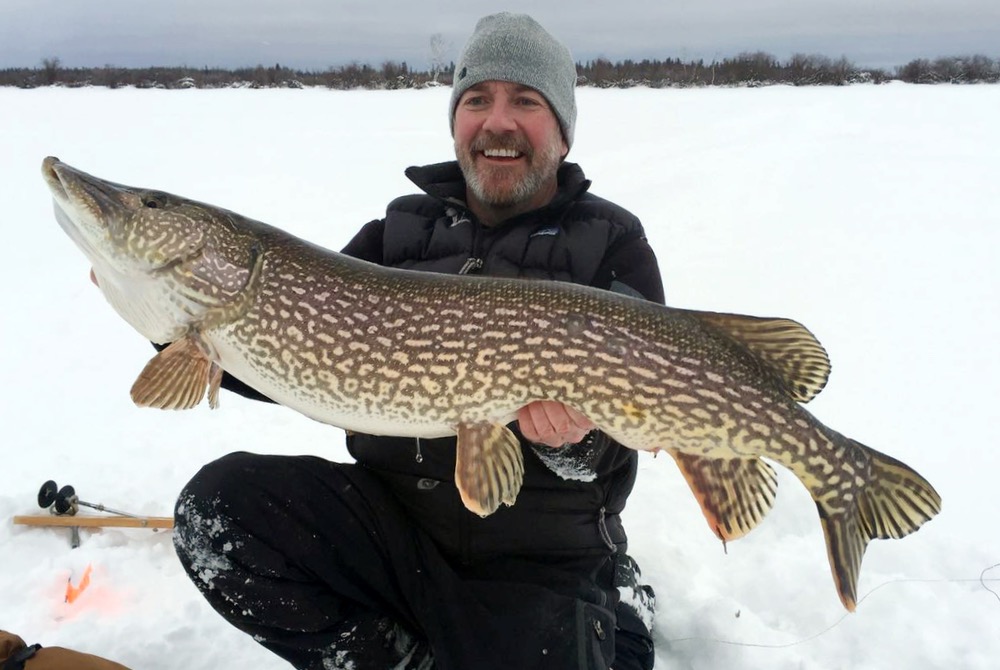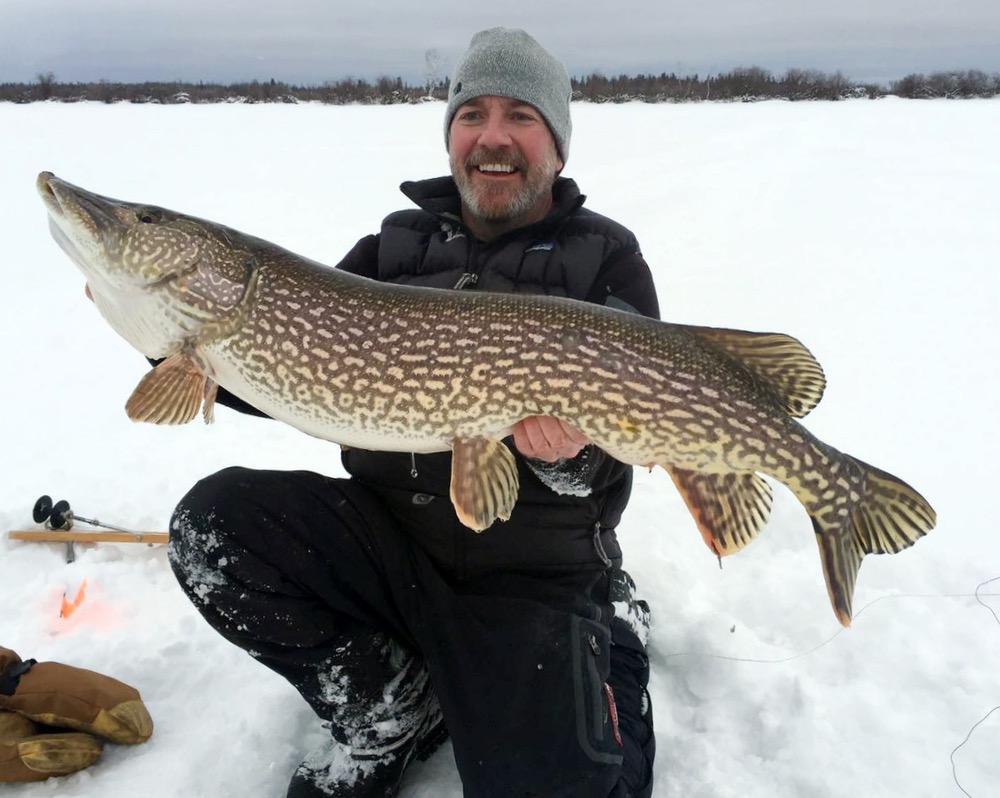Pike protection
Rethinking the quick-strike rig to ensure successful live releases
Advertisement
Developed in Europe and refined in North America, the quick-strike rig is the most efficient and effective way to attract and trigger winter pike to bite. The system revolves around suspending a large, eight- to 12-inch-long, fresh but dead sucker or ciscoe below a tip-up. The bait is carefully secured by two #4 treblehooks spaced two inches apart, with one hook positioned near the tail and the other near the dorsal fin.
When rigged properly, the hooks are perfectly positioned to catch a pike in the lips when it engulfs the bait headfirst—as long as you hookset immediately. That’s why it’s called a quick-strike rig. Unfortunately, some anglers space the hooks too far apart, with one at the head of the bait and the other near the tail. What’s worse, many anglers are also often caught napping and don’t notice the tip-up flag flying until the fish has swallowed the bait down deep.
Advertisement
If only there were a way we could exploit this dead-bait system without ever risking injury to the fish. Thanks to Saskatchewan-based fishing guide Rob Wilson, there is—and it’s a winter pike angler’s dream come true.
CIRCLE HOOKS ARE THE KEY
At the heart of Wilson’s rig are barbless circle hooks. They’re uniquely designed to always hook a fish in the corner of the mouth, no matter how deeply it takes the bait. “I’ve been fishing with circle hooks exclusively for more than 15 years now,” says Wilson, who guides at northern Saskatchewan’s Wollaston Lake Lodge during the open-water season. “And when I compare my results with my traditional quick-strike partners, the hook-up ratio is identical.”
Advertisement

For the system to be completely effective, Wilson stresses you need to use barbless circle hooks with the points aligning perfectly straight with the shaft, without any offset. “If the point is not true, you risk hooking a fish in the gullet,” he says. “So check the hooks after you land every fish to ensure you haven’t bent them.”
Wilson fashions his fish-friendly rigs by tying a barrel swivel to the end of a two- to three-foot-long piece of 30-pound wire leader material (a similar length of 50-pound fluorocarbon works just as well). Then he ties on a 5/0 Gamakatsu circle hook. “You can use any knot you like, so long as the hook swing freely,” he says.
Advertisement
Completing his set-up, Wilson ties Fastach clips to the ends of his 30-pound tip-up lines to make attaching and removing the leaders a breeze. He also hooks his dead baits so they suspend horizontally, one to five feet off the bottom.
[easy-tweet tweet=”To ensure a live release of trophy northern pike, make quick-strike rigs with circle hooks. Here’s how ” user=”OutdoorCanada” hashtags=”icefishing, icefishingFriday, winterfun”]
THE RIG’S MANY BENEFITS
My good friend Jeff Matity, who grew up fishing with Wilson, was the first person to alert me about this groundbreaking method. I’ve used it for the past two winters alongside others using the traditional arrangement, and like Wilson, I’ve enjoyed nothing but success.
One of the many benefits of using talon-like circle hooks is that once they slide into the corner of a big pike’s mouth, you pin the fish perfectly. Plus, you can easily remove the hooks without resorting to jaw spreaders and needle-nose pliers. When you fight a pike to the bottom of the hole and start pulling it up, meanwhile, the hooks will never snag on the underside of the ice or threaten to fly into your hand, which is an all-to-common danger when you use the sharp, barbed trebles.
The most outstanding advantage, however, is that when you see a flag fly, you have the time to walk slowly and carefully across slick ice to avoid slipping, falling or alerting the big predator of your presence and having it drop the bait. Just remember to always pull slowly and steadily on the line when you set the hook—never snap or jerk it.
“You absolutely must wait for the pike to take the second run before you apply pressure to the line,” says Wilson, who has landed hundreds of the big toothy critters, noting that you must be patient when first using the circle-hook system. “You have to slow down and overcome the excitement of seeing a flag fly—if my five-year-old can master it, anyone can. There is simply no better way to safely handle these beautiful fish throughout the hardwater season.”
Catch Gord Pyzer on the Outdoor Journal Radio Show on The Fan 590. See www.odjradio.com for times.
Every Friday this winter we’ll be sharing Outdoor Canada’s top ice fishing tips for 2020. Check back regularly to learn about the latest tackle, tips and techniques for icing more walleye, perch, northern pike, lake trout, crappies and whitefish. And you can see all of this year’s ice-fishing secrets at www.outdoorcanada.ca/2020icefishing.

